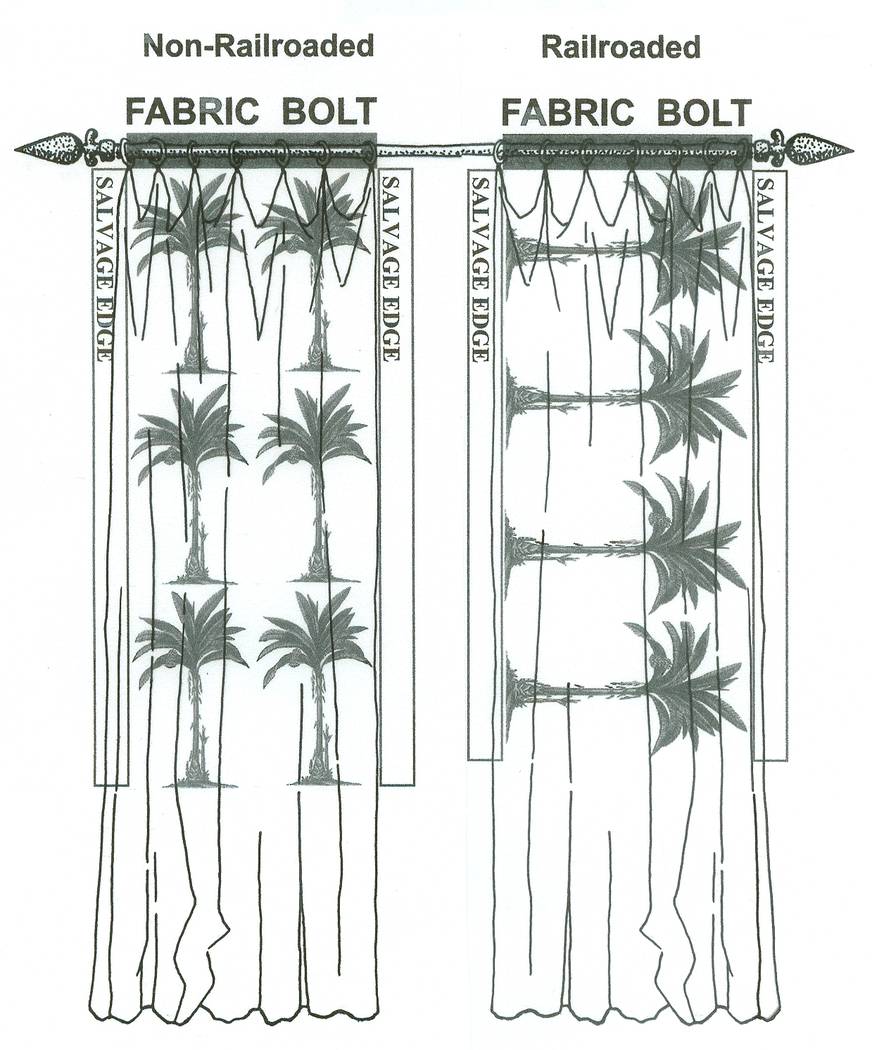Know the lingo when you talk to your designer
Recently when working with a client, I realized I was bringing up terms she was not familiar with. Unfortunately, having been a designer for more than 25 years, I use some terms without thinking. So whether you’re working with an interior designer or shopping on your own, it wouldn’t hurt to know some of our “Designer EZ.”
n 118-inch goods: You can find fabric and wallpaper in 118-inch goods. From selvage edge to selvage edge, the fabric or wallpaper is 118 inches. Most 118-inch fabrics are sheers, so you can have a seamless window of sheers. And 118-inch wallpaper is typically commercial, which allows wall-to-wall wallpaper without any seams.
n AFF (above finished floor): Used when dimensioning an item from the floor. For example, a ceiling fan might be 72-inches AFF, so it is installed 72 inches from the finished floor.
n Book match: When two adjacent sheets of veneer are glued side by side for a symmetrical pattern. This is something you must also consider when using any slabs of granite, marble or travertine when you will be butting any pieces together. The name comes from the final appearance, which resembles the pages of an open book.
n Chalk paint: A type of paint used to give a chalky, aged, distressed appearance versus chalkboard paint. It rarely requires any sanding or priming preparation.
n CMT (cut, make and trim): Acronym for the fabrication process of window treatments and furniture. “Cut” is the cutting of the materials. “Make” is the process of putting it together. “Trim” is checking the quality control of the product and getting it ready to ship.
n COM (customer’s own material): When you use your own fabric, typically for upholstery, instead of using the fabrics available from the furniture manufacturer. Many times the upholstery piece will be priced the same or even more, since they are taking responsibility for using your fabric.
n Diptych: Artwork on two panels that are hung together, where the image continues from one to the other. Essentially one piece of artwork cut in half, with a triptych being three panels.
n Double rubs: Refers to the durability of a type of fabric. The double-rub testing method uses a special machine that passes a testing pad back and forth over the fabric until it is worn out. Each back and forth pass is known as a double rub. The higher the number, the better the durability.
n Draw down: A large sample of paint, normally an 8-by-10, from the actual can of paint being used for the job. Draw downs are supplied by paint stores to provide accurate color and sheen level of paints. Depending upon the size of the project, most paint contractors are able to obtain them for you.
n Dye lot: The lot number that the product came from. For example, fabrics are dyed in varying quantities of yardage, so consistency of color will vary. Always ask for a memo sample of current stock and a cutting for approval if you are ordering a large amount of fabric which is not coming off the same bolt.
n Knocked down (or KD): Furniture that is sold unassembled or partially assembled. Think of a hundred little pieces, small print instructions and the little hex wretch that comes in the package with the screws.
n Knife edged: Edge treatment on a pillow or cushion that is simply sewn together without any embellishments. Like a seam in your clothing.
n Lead time: How long something will take to ship after it is ordered. Notice it is shipped, not arrived. You still have to figure in shipping and delivery time for how long it will take to arrive.
n Left and right arm facing sectionals: Unless you are ordering a sectional that is the same dimension from arm to arm on both sides, you need to be very aware of this. When ordering custom sectionals, the industry standard is to tell the manufacturer what section you want as you are facing the sectional.
So if you are looking at the sectional and want the chaise on the right side, you order a right arm facing chaise. But watch when shopping in retail stores as many order them from where you are sitting. So the same piece could be a left arm sitting chaise. An important and expensive lesson I didn’t learn in design school.
n Light reflective value (LRV): The percentage of light that is reflected from a surface, typically seen with paint. All manufacturers have this number available. The higher the percentage, the more light is reflected. Most whites are 80 percent or more. Dark, deep colors are under 10 percent, therefore absorbing light.
n Memo sample: A sample piece of fabric, tile, carpet or other material. It normally comes with detailed product information, such as material contents, finish, cleaning code and country of origin. The samples are borrowed from a retailer or showroom.
n Pattern match: Having fabric sewn together so that the pattern repeat continues. This is important to confirm when using a print for any custom items. Some manufacturers will charge extra for this, since it takes precise fabric placement.
n Railroaded fabric: The pattern runs across the roll from selvage edge to selvage edge. It allows you to cover the width of a sofa or cornice box in one horizontal piece of fabric without seams.
n Return: The piece of an L-shaped desk that is perpendicular to the main desk unit. You determine the return when sitting at your desk. So a left return is on your left side, unlike the left arm facing sectional previously mentioned.
n Schluter: Decorative metal strips that add a finishing touch to tile edges. They conceal and protect exposed edges, eliminating the need for unsightly caulking.
n Scope of work: Master plan list of what you are hiring someone to do, typically in a contract.
n Stack back: The wall area that’s required for draperies to clear the window when they are completely opened.
n To the trade: Showrooms and websites that you need a designer to access. Many showrooms are to-the-trade only, and they represent manufacturers that often are not found in retail establishments.
Now that you are in the know, you can still always ask your designer if you’re unsure if you are both speaking the same language.
Gail Mayhugh, owner of GMJ Interiors, is a professional interior designer and author of a book on the subject. Questions may be sent by email to GMJinteriors@gmail.com. Or mail to 7380 S. Eastern Ave., Las Vegas, NV 89123.


















